What is C Wire? (Its Role in Your Thermostat)
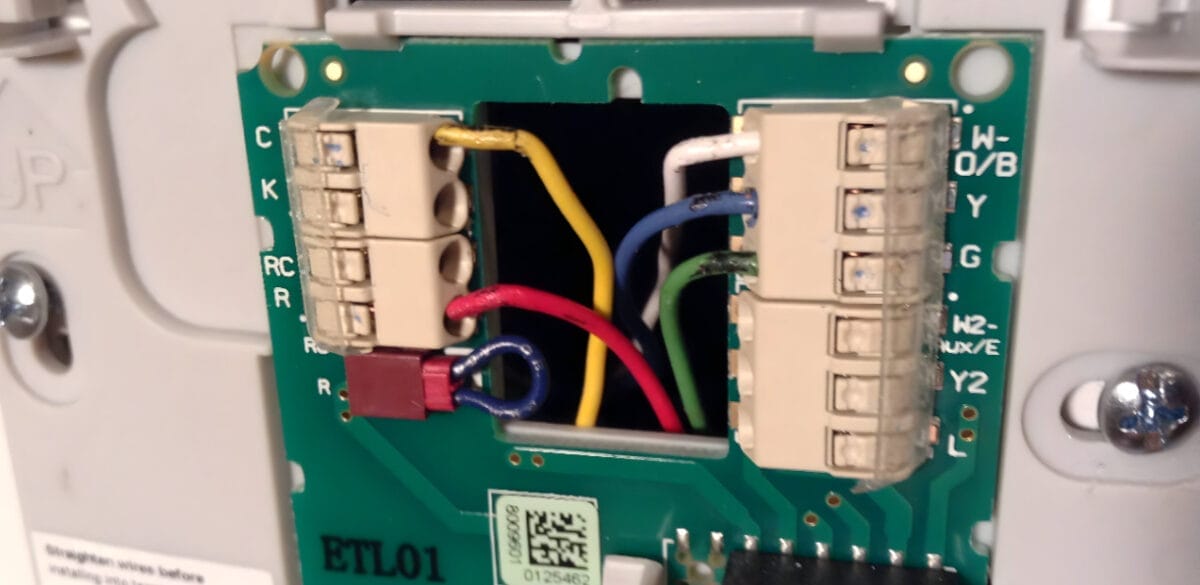
C wire, also known as the “common wire,” might be a term you’ve come across if you’re delving into the world of smart thermostats.
This small but mighty component is vital to your HVAC system, acting as a power source to keep your thermostat connected and functioning properly.
Key insights: The C wire, or common wire, is a crucial component of your thermostat system, providing a steady 24-volt power supply. It ensures uninterrupted power, especially for modern smart thermostats with advanced features, enhancing energy efficiency and reliability.
In this article, we’ll dive deeper. We’ll discuss why it’s critical for smart technology use and how to determine if your current system includes one.
Decoding the C Wire
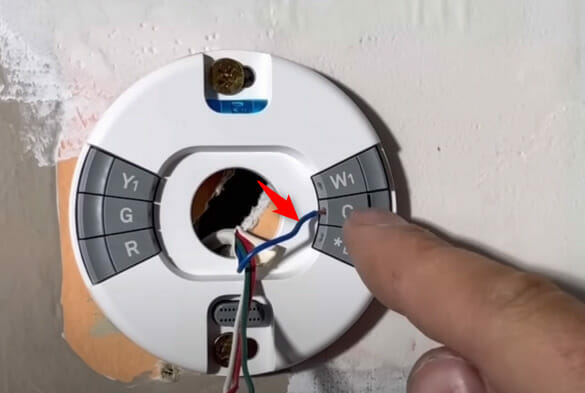
A common wire or ‘C wire’ might sound like something straight out of a spy movie, but it’s a crucial component in your home’s thermostat system.
Thermostats control your heating and cooling systems and need power to do their job. That’s where our little friend steps in – the C wire provides that steady supply of 24-volt power.
Many older thermostats could get by with batteries or steal power from other wires (a bit like thieving pirates!). But as with everything else, thermostats have evolved.
These days, we’ve got programmable models, Wi-Fi-enabled devices- all sorts of cool features! Without a dedicated power source (like our good old C-wire), these modern marvels can act up or even fail to work properly.
Lastly, let me tell you about its appearance because you won’t find any ‘C’ marked on it! The C-wire is often color-coded blue or black, but not always! Just remember when dealing with wiring: safety first!
- Common Wire, aka C-Wire: Provides steady 24-volt power supply to thermostats.
- Older Thermostats: Could function without a C-Wire, but newer smart devices may require one for proper operation.
- Appearance: Often color-coded blue or black, but colors can vary.
So there you go, folks! We’ve decoded the enigma that is the C-wire!
Unveiling the Significance of the C Wire
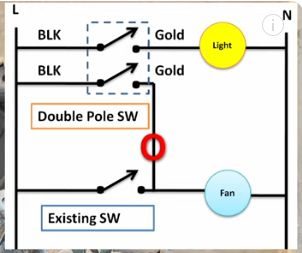
Peeking behind your thermostat, you might’ve noticed a small wire labeled ‘C.’ This little component plays a significant role in ensuring your home’s heating and cooling systems run smoothly.
You may wonder why there can’t be two wires for heating and cooling. In reality, most HVAC systems work on a 24-volt circuit. So, while other wires handle tasks like turning on heat or air conditioning, our trusty C wire delivers 24 volts of electricity.
So what happens if your system doesn’t have a C wire? There are ways around this predicament. Some solutions involve installing an add-a-wire adapter kit – effectively creating an alternative route for power to reach your thermostat.
To sum things up:
- The common (or C) wire provides continuous power to your thermostat.
- Modern thermostats with advanced features often require a C wire.
- If your system lacks a C wire, you can still find solutions like implementing an add-a-wire adapter kit.
Now that we’ve unveiled its significance, it’s clear that despite its humble appearance, the C Wire truly holds weight in keeping our homes cozy and comfortable!
How the C Wire Powers Smart Thermostat
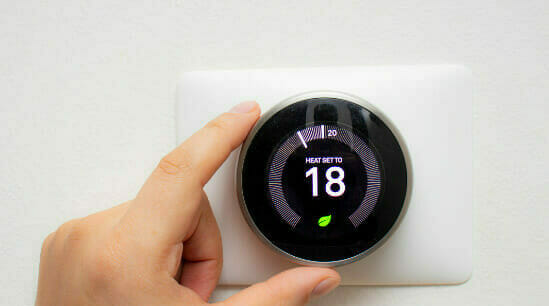
The C wire is typically a blue or black wire from your furnace. Its role as the return path for power to flow back to the source makes it special. It serves as the messenger between your smart thermostat and your HVAC system.
So why does that matter? Well, unlike traditional thermostats that are pretty straightforward in their functions, smart thermostats need a constant power supply. They’re like miniature computers hanging on your wall – controlling the temperature while offering features like Wi-Fi connectivity and touchscreens. To do all this without draining batteries immediately, they need a continuous flow of power – and that’s where the C Wire steps in!
Without a C Wire working hard behind the scenes:
- Your smart thermostat might not function optimally
- Battery life could be compromised
- Some advanced features may not work at all
Still feeling unsure if you have a C Wire? You can always peek inside your current thermostat (with caution!). If an unused blue or black wire is tucked away, you’ve found potential evidence of an unconnected C-wire.
But remember: even though I love DIY spirit just as much as anyone else… when it comes to electricity and wiring – safety first! Always consult with professionals before making any changes.
Compatibility of C Wire with Different Thermostats
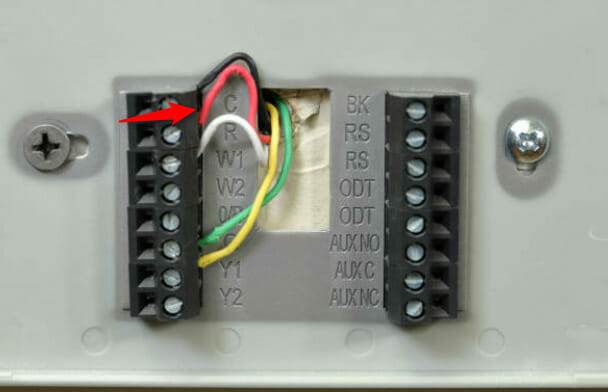
The world of thermostats is diverse, and the compatibility of a C wire (or “common” wire) can vary greatly from one model to another. But don’t worry; I’m here to help clear things up.
First, it’s helpful to know that most modern thermostats require a C wire for their advanced features. This includes Wi-Fi connectivity and touchscreen displays in brands like Nest or Ecobee. These high-tech devices may malfunction or even drain batteries alarmingly without a C wire.
On the flip side, many older thermostats do not require a C wire. They’re typically simpler machines without Wi-Fi capabilities or complex programming options—they control your heating and cooling system.
While we’re on the subject, let me give you an idea about smart thermostats. Now, these allow you to remotely control your home’s climate via smartphone apps or voice commands through Alexa or Google Assistant! But guess what? They also need that little old C wire for power.
So there you have it—whether you have a traditional thermostat or one loaded with all the latest tech gadgets—the humble C-wire plays its part in keeping our homes comfortable year-round.
Adding a C Wire: Installation and Wiring Guide
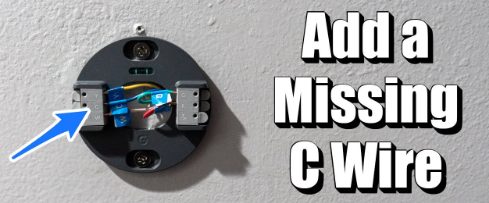
I’m here to guide you if you’ve been wondering how to add that elusive C wire to your thermostat setup.
- Identify if You Need One: Not every home requires a C wire. Some newer thermostats can function perfectly fine without one. But if you find that yours isn’t maintaining its programmed schedule or losing Wi-Fi connection frequently, that might indicate needing a common wire.
- Check Your HVAC System: Before starting, turn off the power supply for safety reasons! Then, take a peek inside your HVAC system control panel- look for an extra unused blue or black wire, as these are often reserved for the common terminal.
- Connect The Wire: Once located, connect this spare cable to the C terminal on both ends – at your thermostat and HVAC system control board.
- Test It Out: After hooking up everything, flip back on the power and give it a test run!
If an extra cable is unavailable or tinkering with wires doesn’t sound appealing, consider opting for alternatives such as an ‘add-a-wire’ kit or even upgrading to a wireless model, which wouldn’t require running new wires!
Remember, while DIY-ing things can be rewarding (and budget-friendly), there’s no harm in calling upon professionals when needed! Especially when dealing with electricity – safety always comes first.
And that’s how you add a common wire to your thermostat setup!
Solving Common C Wire Connection Problems

I’ve encountered my fair share of thermostat wiring issues over the years, and a common culprit tends to be the elusive “C wire.” So, let’s dive in and see if I can help you troubleshoot some of these problems!
The first issue that often pops up is simply not installing a C wire. Many older thermostats don’t need one, but if you’re installing a modern smart thermostat, you’ll generally need this power source for consistent operation. No C wire? No problem! There are adapter kits available that can provide power from other sources.
Now, let’s say your system isn’t turning on at all. That might mean your C wire connection is loose or disconnected somewhere along the line. I recommend checking both ends – at your thermostat and HVAC control board – just to be safe.
Of course, it’s also possible that there’s a voltage issue. Your C wire should deliver about 24 volts AC to your thermostat; anything less might cause erratic behavior or prevent it from working altogether. A simple multimeter test will tell you what’s going on there.
And finally, don’t overlook the simple stuff! It could be something as basic as dirt or dust interfering with connections, so thoroughly clean everything while you investigate.
Remember: when solving common problems with C wires, it’s always easier to address potential issues during installation than deal with them down the road.
C Wire Color Coding and Identification
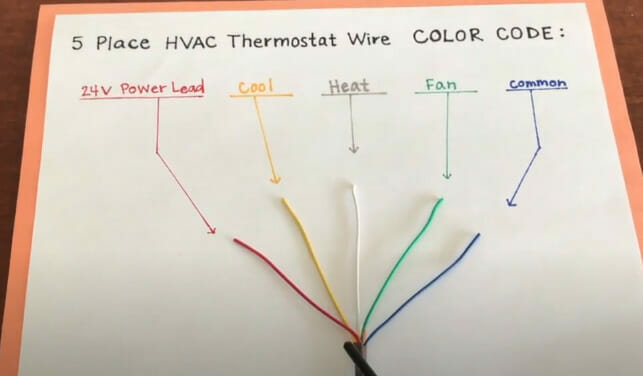
When it comes to wiring, I’ve learned that color coding plays a crucial role. It’s not just about aesthetics; it’s about safety, too. Let me tell you, the ‘C’ wire or common wire is no exception in this regard.
Typically, the C wire sports a blue or black coat. But don’t be fooled by colors alone. Sometimes, other wires like red (power), white (heat), green (fan), and yellow (cool) can serve as a substitute for the C wire in some systems.
The color of the wire doesn’t always correspond to its function. A blue or black wire might not necessarily be your C-wire! This lack of standardization can make identifying your C-wire an adventure in itself!
Tracing each wire back to its terminal at the HVAC control board will give you a clue about its function. The terminal labels usually indicate their purpose.
Look for voltage when trying to identify your c-wire – typically between 24-28 volts AC when measured against ground reference should raise a flag that you’ve found your elusive c-wire!
In our quest for understanding c-wires, we’ve uncovered that while color helps with identification, it isn’t foolproof! We’ve also learned how voltage measurements and terminal labels can provide clues and help us safely navigate the maze of wires inside our thermostat setup.
Upgrading to a C Wire-Friendly Thermostat
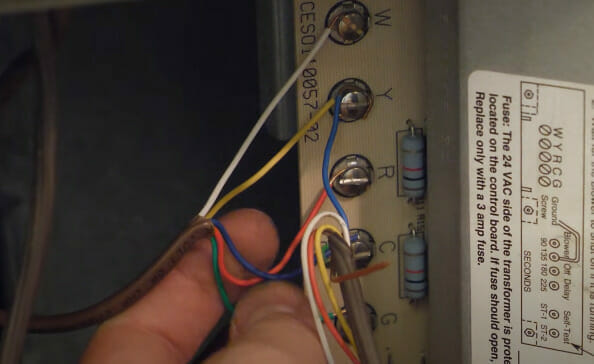
Let’s dive into the final section of our discussion – upgrading to a thermostat that loves your C wire. It’s not as complicated as you might think, and I’m here to guide you every step of the way.
Firstly, turning off the power supply before any upgrade is crucial. Your breaker box should have a switch for your HVAC system. Flip it off and ensure there’s no power heading to your thermostat.
Next up is checking out what type of wiring you have. Most thermostats will have labels on their wires or terminals, so look out for them when removing the old unit. If it isn’t labeled, don’t worry! Snap a quick pic with your phone before disconnecting anything – trust me, it’ll save headaches later.
Now comes the fun part – installing your brand new c-wire thermostat! Every unit will have different instructions. But typically, all involve connecting wires to corresponding terminals (remember that picture you took?). Once connected properly and mounted on your wall, flip back on the power at the breaker box.
So, if things get too tricky or beyond your comfort level, contact a professional HVAC technician.
Upgrading to a C Wire-friendly thermostat isn’t as daunting as it might seem, and I hope you feel more confident about making the switch after reading this post.
Pros and Cons of Upgrading to a C Wire-Friendly Thermostat
Now, every home improvement decision comes with its own set of pros and cons, and this one’s no different. So, let’s dive right in and explore the advantages and disadvantages of switching.
Pros: Why You Should Consider It
- Steady Power Supply: The most significant advantage of having a C wire-friendly thermostat is its consistent power supply. With a dedicated wire, your thermostat won’t rely on batteries, ensuring it never runs out of juice. This means no more waking up to a freezing house because the batteries quit on you overnight.
- Compatibility with Advanced Features: Smart thermostats are all the rage these days, offering features like remote control, voice commands, and energy-saving algorithms. Many of these high-tech wonders require a C wire to function optimally. Upgrading opens up a world of possibilities for modernizing your home’s climate control.
- Energy Efficiency: A C wire-friendly thermostat can help you achieve better energy efficiency. It allows your thermostat to communicate with your HVAC system more effectively, optimizing temperature settings and potentially reducing your energy bills.
- Reduced Maintenance: Say goodbye to the hassle of changing thermostat batteries regularly. With a C wire, your thermostat stays powered up without interruption, reducing maintenance and the associated costs.
- Enhanced Reliability: No more worries about your thermostat suddenly going offline due to dead batteries or intermittent power supply. A C wire ensures your thermostat is always online and ready to keep your home comfortable.
Cons: What to Consider
- Installation Complexity: Adding a C wire to your thermostat setup can be tricky, especially if your current wiring doesn’t include one. This may require professional installation, which can add to the overall cost.
- Initial Investment: C wire-compatible thermostats, particularly smart ones, are pricier than basic models. While they can save you money in the long run through energy efficiency, the upfront cost might be a deterrent for some.
- Compatibility Issues: Not all HVAC systems are compatible with C wire upgrades. Before making the switch, it’s essential to ensure your system can support this type of wiring. Compatibility issues can lead to complications during installation.
- DIY Challenges: Adding a C wire can be a DIY project, but it’s not for everyone. It involves working with electrical components, and if not done correctly, it can lead to issues or even damage to your HVAC system.
- Limited Benefits for Older Systems: If you have an older HVAC system that doesn’t support advanced features, the advantages of upgrading to a C wire-friendly thermostat may be limited. In such cases, you might not fully capitalize on the potential benefits.
If you’re unsure about the installation process or compatibility, it’s always wise to consult a professional HVAC technician who can guide you. Remember, every home is unique, and what works best for one may not be the ideal choice for another.
Happy home improvement adventures!
References
Studies:
- National Library of Medicine. https://www.ncbi.nlm.nih.gov/pmc/articles/PMC8776175/
- American Council for an Energy-Efficient Economy. https://www.aceee.org/sites/default/files/publications/researchreports/a1801.pdf
Organizations:
- The American Society of Heating, Refrigerating and Air Conditioning Engineers (ASHRAE). https://www.ashrae.org/
- U.S. Department of Energy (DOE). https://www.energy.gov/
Books:
- “Modern Hydronic Heating: For Residential and Light Commercial Buildings” by John Siegenthaler
- “HVAC Control Systems” by Ronnie J. Auvil
Website Resources:
- Energy.gov. https://www.energy.gov/
Video References:
Tech With Brett
The DIY HVAC Guy
Rob Some Knowledge
One Hour Smart Home
DIY with Michael Borders
